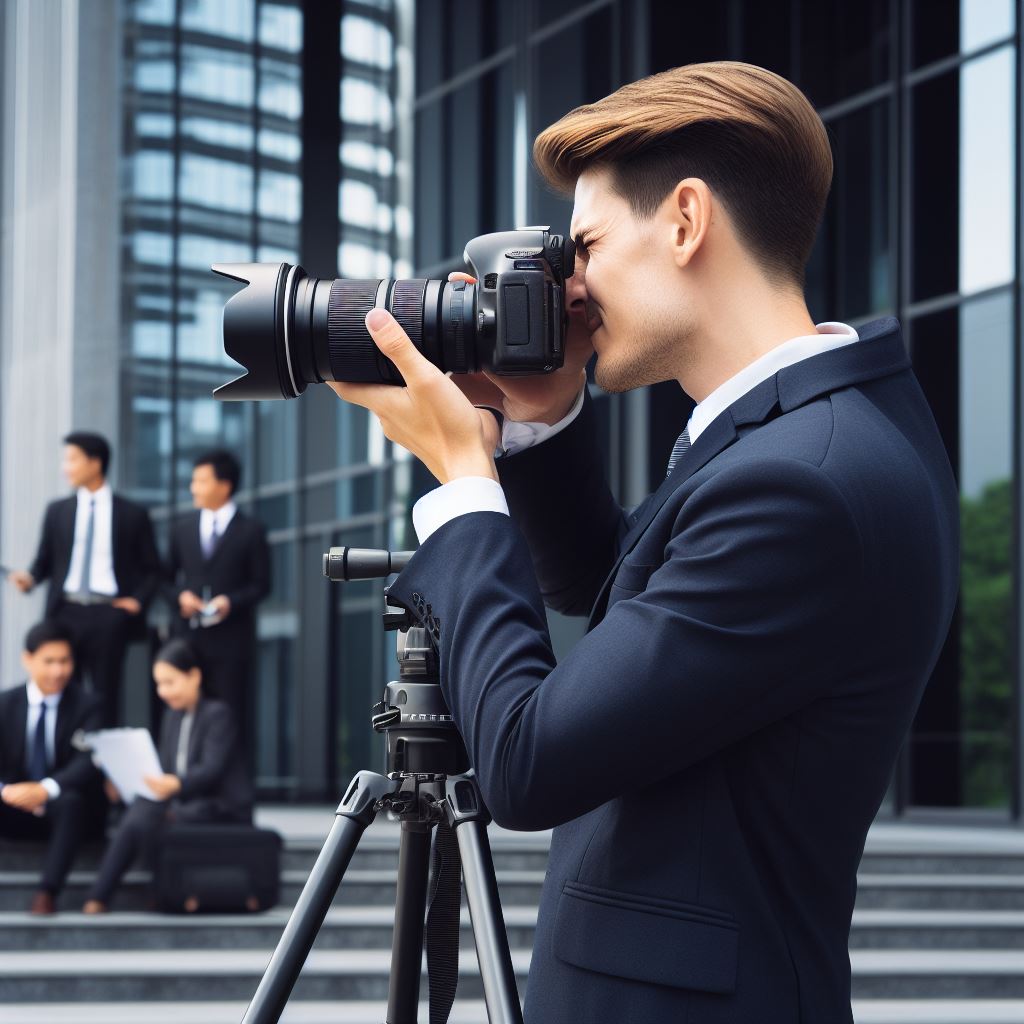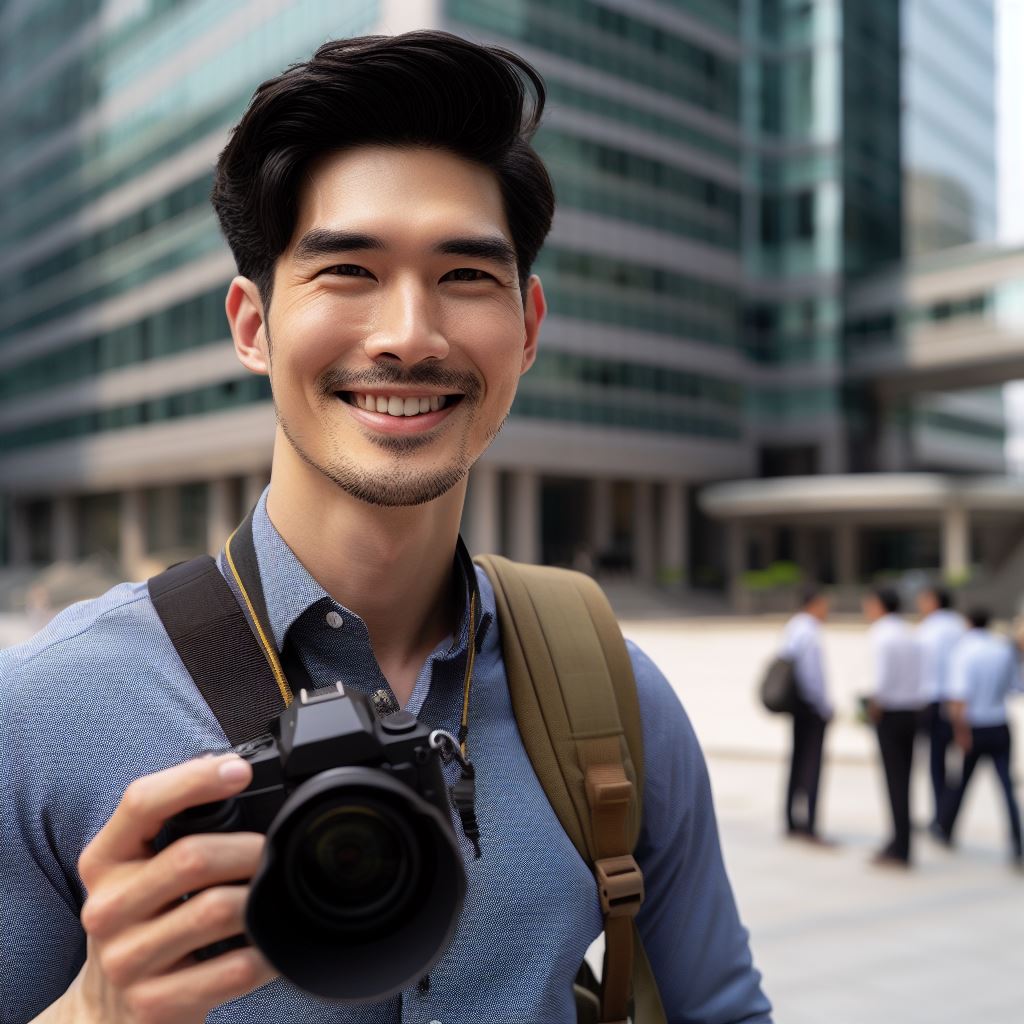Introduction
A. Overview of Photographers’ Rights
Photographers have unique rights related to their creative work, including the images they capture. These rights are crucial.
B. Importance of Understanding US Copyright Laws
- Protecting Your Work: Knowing copyright laws helps safeguard your photos from unauthorized use or reproduction.
- Preserving Income: Understanding copyright ensures you can profit from your photography through licensing and sales.
- Legal Recourse: Familiarity with these laws enables photographers to take legal action if their work is misused.
- Respect and Credibility: Knowledge of copyright laws reinforces your professional standing and promotes respect for your art.
- Educational Value: Educating yourself on these laws enhances your credibility and helps educate others in the field.
In this blog section, we’ll explore these rights and laws in detail, empowering photographers to protect their creative endeavors.
Definition of copyright
A. What Is Copyright?
Copyright is a legal protection that grants exclusive rights to creators for their original works. It safeguards intellectual property, including photographs.
B. Application to Creative Works
- Photography: Copyright applies to photographs as soon as they’re created and fixed in a tangible medium.
- Ownership: The creator of a photograph holds the copyright, granting them exclusive rights to reproduce, distribute, and display it.
- Rights: These rights include making copies, creating derivative works, and selling or licensing the image.
- Duration: In the US, copyright typically lasts for the creator’s lifetime plus 70 years.
- Fair Use: Some uses may be exempt from copyright infringement if they fall under the “fair use” doctrine, like commentary, criticism, or news reporting.
- Registration: While not required, registering your work with the US Copyright Office provides added protection and the ability to sue for damages.
- Public Domain: When copyright expires or the creator explicitly places their work in the public domain, it’s free for all to use.
- Creative Commons: Creators can also use licenses like Creative Commons to specify how their work can be used by others.
- Moral Rights: In some cases, creators retain moral rights, such as the right to be attributed or object to derogatory treatment.
- Infringement: Unauthorized use of copyrighted works can lead to legal action, including fines and damages.
- Digital Age: In the digital era, protecting photographic copyrights is vital due to easy online sharing and reproduction.
Most importantly, copyright is a crucial aspect of photography and other creative works, protecting the rights of creators and ensuring they can benefit from their artistic endeavors.
Understanding the ins and outs of copyright law is essential for photographers to navigate the complex world of intellectual property and protect their work.
Read: Wedding Photography in the USA: Styles, Prices & Demand
Copyright Ownership
In this section, we will explore the concept of copyright ownership for photographs and the distinction between ownership and licensing rights.
A. Explanation of Who Owns the Copyright for a Photograph
- Under US copyright laws, the photographer is generally considered the owner of the copyright for a photograph.
- This means that the photographer has the exclusive right to reproduce, distribute, display, and modify the photograph.
- Ownership extends to both professional photographers and individuals who take photographs for personal use.
- Even if the photograph is taken by someone else using the photographer’s equipment, the copyright still belongs to the photographer.
- The copyright ownership starts the moment the photograph is created and lasts for the photographer’s lifetime plus 70 years.
- Registering the photograph with the US Copyright Office provides additional legal benefits and protections.
- Exceptions to the general rule of photographer ownership include photographs taken as part of employment or commissioned work.
- If the photograph is a work made for hire, the employer or the person who commissioned the work may own the copyright.
- However, a written agreement specifying ownership is crucial to determine the rights of both parties involved.
B. Distinction Between Ownership and Licensing Rights
Understanding the difference between ownership and licensing rights is essential for photographers and potential users of their photographs.
- Ownership rights grant the photographer exclusive control over the photograph, allowing them to dictate its use and distribution.
- On the other hand, licensing rights refer to granting permission to others to use the photograph while retaining ownership.
- Licensing can be done through various means, such as selling prints, granting usage rights, or licensing for commercial purposes.
- By licensing their work, photographers can earn income while maintaining control over how their photographs are used.
- Licensing agreements can be customized to specify the duration, scope, and limitations of the permitted use.
- The terms of licensing agreements should be clearly communicated and agreed upon by both parties involved.
- License agreements may be exclusive, granting sole permission to use the photograph, or non-exclusive, allowing multiple users.
- Photographers can revoke or modify licensing agreements if the terms of use are violated.
- It is important for photographers to keep records and documentation of licensing agreements for legal purposes.
Understanding copyright ownership and licensing rights is crucial for both photographers and potential users of photographs.
By knowing who owns the copyright and the distinction between ownership and licensing rights, photographers can protect their work and make informed decisions regarding its use.
Similarly, potential users can ensure they obtain the necessary permissions and rights to use photographs legally and ethically.
Read: Breaking into the US Market: Tips for Aspiring Photographers
Copyright Protection
A. Duration of copyright protection for photographs
- Copyright protection for photographs lasts for the lifetime of the photographer plus 70 years.
- After the photographer’s death, the copyright may be inherited by their heirs.
- Once the duration expires, the photograph enters the public domain and can be used freely.
B. Automatic copyright protection vs. registering with the copyright office
- Photographs are automatically protected by copyright as soon as they are created.
- Registering the photograph with the copyright office provides additional legal benefits and protections.
- Registration creates a public record of the copyright claim, making it easier to prove ownership.
- Registered works are eligible for statutory damages and attorney’s fees in case of infringement.
- Registration also allows the photographer to file a lawsuit in federal court if necessary.
- Photographers can register their photographs online through the Electronic Copyright Office (eCO).
- Registering early (within three months of publication or before infringement occurs) provides more benefits.
Registering with the copyright office enhances legal benefits and strengthens photographers’ grounds for actions, protecting their creative work effectively.
Copyright protection is crucial, preserving photographers’ efforts, fostering innovation, and ensuring a diverse visual culture.
Understanding protection duration and registration advantages empowers photographers to assert their rights proactively under US copyright laws.
Respect and protect photographers’ rights for a fair creative landscape, benefiting creators, viewers, and consumers of visual content.
Appreciate the effort and talent behind striking photographs, supporting a thriving artistic community by understanding photographers’ rights and copyright laws.
Read: The Role of Photography Associations in the USA
Fair Use and Limitations
A. Fair use doctrine
Fair use doctrine allows limited use of copyrighted material without permission from the copyright owner. This applies to photography as well.
However, it is important to understand the factors that determine fair use in order to avoid infringement.
Transform Your Career Today
Unlock a personalized career strategy that drives real results. Get tailored advice and a roadmap designed just for you.
Start Now1. Purpose and character of the use
When determining fair use, the purpose and character of the use is a crucial factor.
Non-profit, educational, and transformative uses are more likely to be considered fair use.
Commercial uses may face more scrutiny.
2. Nature of the copyrighted work
The nature of the copyrighted work also plays a role.
Factual or creative works have different considerations.
Using a small portion of a factual photograph may be deemed fair use, while using a substantial portion of a highly creative work may not.
3. Amount and substantiality of the portion used
The amount and substantiality of the portion used is another key factor.
Taking a small portion that is not central to the work is more likely to be considered fair use.
However, using the heart of the photograph without permission could lead to copyright infringement.
4. Effect on market value
Lastly, the potential effect on the market value of the copyrighted work is considered.
If the use of a photograph reduces its market value or potential sales, it may not be considered fair use.
It is important to minimize any negative impact on the copyright owner’s ability to profit from their work.
B. Factors to consider for determining fair use in photography
1. Purpose of use
First, consider the purpose of using the photograph.
Are you using it for commercial purposes, educational projects, or transformative works?
Non-commercial, educational, or transformative uses are more likely to be deemed fair use.
2. Nature of the work
Next, assess the nature of the copyrighted photograph. Is it a factual image or a highly creative one?
Factual images may be subject to more leniency under fair use, while creative works are more protected.
3. Amount used
Consider the amount of the photograph you plan to use.
Is it a small portion that does not compromise the original work?
Showcase Your Business Today
Reach thousands of readers actively exploring professional services. Publish your business profile and grow your audience now.
Publish NowUsing a minimal and inconsequential portion increases the likelihood of fair use.
4. Effect on market
Evaluate the potential impact on the market value of the copyrighted photograph. Will your use diminish the market for the original work?
If your use competes with the photographer’s ability to profit, fair use may not apply.
5. Attribution and acknowledgment
Always provide proper attribution and acknowledgment when using a photograph under fair use.
This demonstrates respect for the original creator and can help bolster your fair use argument.
6. Seek legal advice
When in doubt about fair use, it is advisable to seek legal advice.
Every case is unique and understanding the complexities of copyright law can be challenging.
Consulting with an attorney specialized in intellectual property can provide clarity and guidance.
Understanding fair use and its limitations is crucial for photographers to avoid copyright infringement.
By considering the purpose, nature, amount used, effect on the market, and seeking legal advice when needed, photographers can navigate copyright laws responsibly and protect their rights.
Read: Portrait Photography: Navigating the US Market & Trends

Copyright Infringement
A. Definition of Copyright Infringement
- Copyright infringement occurs when someone reproduces, distributes, or displays a copyrighted work without the owner’s permission.
- This encompasses various creative works like photographs, books, music, and even software.
- Infringement isn’t limited to duplicating the entire work; even a substantial portion can qualify.
- To infringe, one doesn’t need to claim the work as their own – the act alone suffices.
- When using copyrighted material, you must always obtain proper authorization from the copyright owner.
- Fair use is a legal doctrine that permits limited use of copyrighted material without permission.
B. Consequences and Penalties for Copyright Infringement
- Copyright infringement can lead to severe legal repercussions, including financial penalties and injunctions.
- The copyright owner may file a lawsuit to protect their rights.
- Statutory damages can range from $200 to $150,000 per infringement, depending on the severity.
- The court may also award actual damages suffered by the copyright owner due to infringement.
- In some cases, infringers could face criminal charges, resulting in fines and imprisonment.
- To avoid these consequences, understanding and respecting photographers’ rights is crucial.
- A Digital Millennium Copyright Act (DMCA) takedown notice can force removal of infringing content.
- Online platforms often implement DMCA policies to address copyright infringements.
- Ignorance is not a valid defense in copyright cases, making it vital to be aware of the laws.
- Registering your copyrighted works with the U.S. Copyright Office strengthens your position in a legal battle.
In general, copyright infringement is a serious matter with substantial consequences.
Understanding what constitutes infringement and respecting photographers’ rights is essential for both creators and users of creative content to navigate the complex landscape of copyright law.
Awareness and adherence to these laws can help protect your creative works and avoid costly legal battles.
Defending Copyright Claims
A. Steps to take if someone infringes your photograph’s copyright
- Register your photograph with the U.S. Copyright Office to establish a legal record.
- Gather all evidence of the infringement, including copies of the original photograph and any relevant documentation.
- Send a cease and desist letter to the infringer, specifying the alleged infringement and demanding they remove the photo.
- If the infringer does not respond or refuses your request, consult a copyright attorney for further action.
- Consider filing a lawsuit against the infringer to seek damages and a court order to stop the infringement.
- Continue to document any ongoing infringement and enforce your rights through legal means.
B. How to enforce your rights as a photographer
- Ensure your photographs are properly marked with a copyright notice, including the symbol ©, your name, and the year of creation.
- Monitor the use of your photographs through regular searches on the internet, social media, and industry publications.
- Use watermarking to protect your images from unauthorized use and discourage potential infringers.
- Consider joining professional photographer associations that offer legal resources and support in copyright protection.
- Educate yourself about copyright laws and stay informed about new developments and court rulings.
- Be proactive in policing your rights and take immediate action against any infringement that you detect.
- Maintain proper records of your photographs, including dates of creation, publication, and any licenses or agreements.
- Think about obtaining insurance coverage for your photography business to mitigate potential financial losses from infringement.
- Collaborate with a copyright attorney to draft and review licensing agreements to ensure your rights and interests are protected.
- Consider utilizing digital rights management (DRM) technologies to restrict unauthorized access and distribution of your photographs.
- Pursue legal action if necessary and seek damages, injunctions, or other relief to enforce your rights.
By understanding and asserting your rights as a photographer, you can protect your creative work and ensure its proper recognition and compensation.
International Copyright Considerations
A. Overview of copyright protection outside of the US
- Copyright protection varies from country to country.
- Each country has its own set of rules and regulations regarding intellectual property.
- Some countries may not offer the same level of protection as the US.
- International copyright agreements dictate how works are protected between participating countries.
- Berne Convention and WIPO Copyright Treaty are examples of such agreements.
- Countries that are part of these agreements generally protect foreign works like their own.
- However, even in countries without agreements, there may still be some level of protection through reciprocity.
B. The importance of understanding copyright laws when working internationally
- Photographers often work internationally due to the global nature of their industry.
- Understanding international copyright laws is crucial to protecting their creative work.
- Failing to adhere to copyright laws in foreign countries can lead to legal consequences.
- Without proper protection, photographers risk having their work stolen or used without permission.
- Knowing the laws allows photographers to establish their rights and take appropriate legal action if needed.
- International copyright laws also affect the licensing and distribution of photographs.
- Knowing the regulations helps photographers navigate the complexities of international licensing.
- Understanding copyright laws in various countries facilitates collaborations and business opportunities.
- Complying with local laws builds trust and professionalism in international photography projects.
- Photographers can also benefit from learning about international copyright laws through networking and professional development opportunities.
Violations and Legal Actions
A. Common copyright violations in photography
- Using a photograph without permission or proper licensing.
- Modifying or altering a photograph without the photographer’s consent.
- Claiming someone else’s photograph as your own.
- Reproducing, distributing, or displaying a photograph without authorization.
- Using a photograph for commercial purposes without obtaining the necessary rights.
B. Legal actions available to photographers in case of copyright infringement
- Civil lawsuit: Photographers can file a lawsuit against the infringing party seeking remedies, such as damages and injunctions.
- Registration requirement: Registering photographs with the U.S. Copyright Office provides additional legal protection and the ability to seek statutory damages and attorney’s fees.
- DMCA takedown notice: Under the Digital Millennium Copyright Act, photographers can request the removal of infringing content from internet platforms.
- Cease and desist letter: Sending a written notice to the infringer, demanding them to immediately stop using the copyrighted photograph.
- Licensing negotiations: Engaging in discussions with the infringing party to reach a settlement, such as obtaining proper licensing or compensation for unauthorized use.
- Mediation or arbitration: Opting for alternative dispute resolution methods to resolve the copyright infringement case outside of court.
- Collective management organizations: Joining organizations like the Copyright Clearance Center or licensing agencies to manage and enforce copyright for photographers.
- Monitoring services: Utilizing specialized services or software to monitor online platforms and detect unauthorized use of photographs.
- Watermarking and metadata: Adding watermarks or embedding copyright information in the metadata of photographs to discourage infringement and facilitate ownership identification.
- Public awareness campaigns: Educating the public about photographers’ rights and the importance of respecting copyright to prevent future violations.
Photographers must be vigilant in protecting their work and understanding the legal options available to enforce their rights.
By staying informed, registering their photographs, and taking appropriate legal actions, photographers can deter and address copyright violations effectively.
Explore Further: Cultural Impact: The Artist’s Role in American Society
Conclusion
A. Recap of key points discussed
Throughout this section, we have explored the importance of photographers understanding their rights under US copyright laws.
We started by examining the basic principles of copyright protection, including the notion of originality and the requirements for obtaining copyright protection.
We then delved into the specific rights granted to photographers, such as reproduction, distribution, and display rights. Next, we addressed the issue of ownership and how it affects photographers’ rights.
We highlighted the distinction between commissioned works and works for hire, emphasizing the need for clear agreements to avoid disputes.
Furthermore, we explored the concept of fair use and its limitations, providing guidelines to help photographers determine if their work qualifies for fair use exceptions.
We also discussed the importance of obtaining model and property releases to avoid potential legal issues.
B. Encouragement to photographers to understand their rights and use copyright laws to their advantage
In the end, it is crucial for photographers to educate themselves about US copyright laws to protect their creative works.
By understanding their rights, photographers can confidently navigate the legal landscape and enforce their ownership when necessary.
Copyright laws not only provide financial advantages, such as licensing and royalty opportunities, but also safeguard the integrity and reputation of their work.
Photographers are encouraged to explore resources such as professional associations, legal experts, and online tutorials to deepen their understanding of copyright laws and how they apply to photography.
By proactively protecting their intellectual property, photographers can build a sustainable career and contribute to the growth and evolution of the photography industry as a whole.
Remember, knowledge is power, and it is essential to stay informed and vigilant in the ever-changing world of creative rights.
[E-Books for Sale]
The Big Book of 500 High-Paying Jobs in America: Unlock Your Earning Potential
$19.99 • 500 High-Paying Jobs • 330 pages
Explore 500 high-paying jobs in America and learn how to boost your career, earn more, and achieve success!
See All 500 High-Paying Jobs of this E-Book
1001 Professions Without a Degree: High-Paying American Jobs You Can Start Now
$19.99 • 1001 Professions Without a Degree • 174 pages
Discover 1001 high-paying jobs without a degree! Unlock career tips, skills, and success strategies for just $19.99!




